Tired of lights that flicker on for every passing cat? You want security, not constant annoyance and wasted energy. Finding that perfect balance between safety and sanity can be frustrating.
The main advantages are enhanced security and energy efficiency, as they only activate when needed. However, the primary disadvantages include frequent false triggers from animals or weather, a higher initial cost, and potential for bothersome glare if not positioned correctly, which can annoy you and your neighbors.
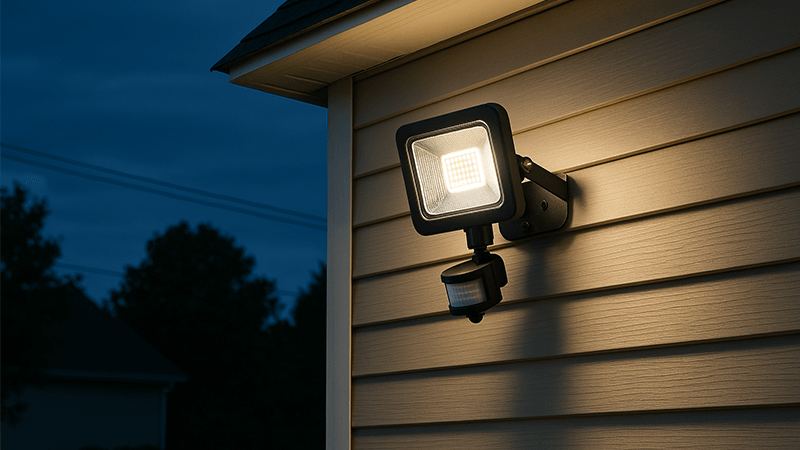
Motion-sensing lights are a brilliant idea on paper, and when they work correctly, they are fantastic. I’ve installed them myself and for clients, seeing firsthand how they can provide peace of mind. But I’ve also spent late nights troubleshooting a client’s light that keeps turning on for no apparent reason. It’s this dual experience of success and frustration that gives us a clear picture of their true value. To really understand if they are right for your project, we need to break down the specific issues you might face, starting with the sensor itself. Let’s look closer at the common problems and how to navigate them.
What are the disadvantages of motion sensor lights?
Ever been startled by your own security light? You install it for peace of mind, but it ends up triggering for every rustle of leaves, making you ignore real alerts.
The most significant disadvantage is frequent false triggers. These are often caused by small animals, wind-blown branches or debris, and even passing cars. This can be annoying, waste energy, and reduce your sensitivity to a potential genuine threat, defeating the light’s primary security purpose.
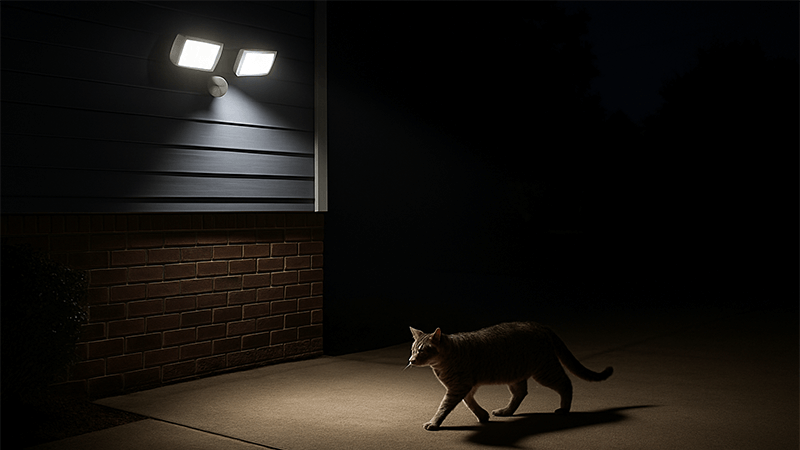
In my years of manufacturing and consulting on lighting projects, the number one complaint I hear about motion sensors is false activation. It’s incredibly frustrating. I once had a client, Shaz, a purchasing manager in the UAE, who was sourcing lights for a residential complex. He told me the residents were complaining constantly. The lights were being triggered by stray cats and the strong desert winds blowing debris around at night. This "cry wolf" effect is a real problem. When a light goes off ten times a night for no reason, you eventually stop looking out the window. This completely undermines the security benefit. To design a reliable product, we have to consider these real-world challenges.
Common Issues and Solutions
The effectiveness of a motion sensor light often comes down to understanding its limitations and how to work around them.
| Issue |
How It Happens |
Potential Solutions |
| False Triggers |
Passive Infrared (PIR) sensors detect heat signatures. A cat, a raccoon, or even hot air from a vent can set it off. |
Adjust sensitivity settings. Aim the sensor downward to limit detection range. Use masking tape on the sensor to create "blind spots" for high-traffic areas like sidewalks. |
| Weather Impact |
Extreme heat can reduce a PIR sensor’s ability to detect a temperature difference. Heavy rain, snow, or fog can sometimes cause false triggers or block the sensor’s view. |
Install the light in a slightly sheltered location, like under an eave. Look for models with a high IP (Ingress Protection) rating, like IP65, for better weather resistance. |
| Limited Range |
Every sensor has a detection angle and distance limit. If not positioned correctly, it can leave significant blind spots. |
Map out the area you want to cover before installation. For large areas, consider using multiple lights positioned to overlap their detection zones slightly. |
What are the disadvantages of LED flood lights?
You’re ready to upgrade to long-lasting LEDs. But the high price tag gives you pause, and you worry the light might be too harsh, turning your backyard into a stadium.
The main disadvantages of LED floodlights are their higher initial purchase price compared to traditional halogen bulbs. They can also produce intense glare and light pollution if poorly designed or aimed, and most integrated units cannot be repaired—the entire fixture must be replaced if the LED fails.
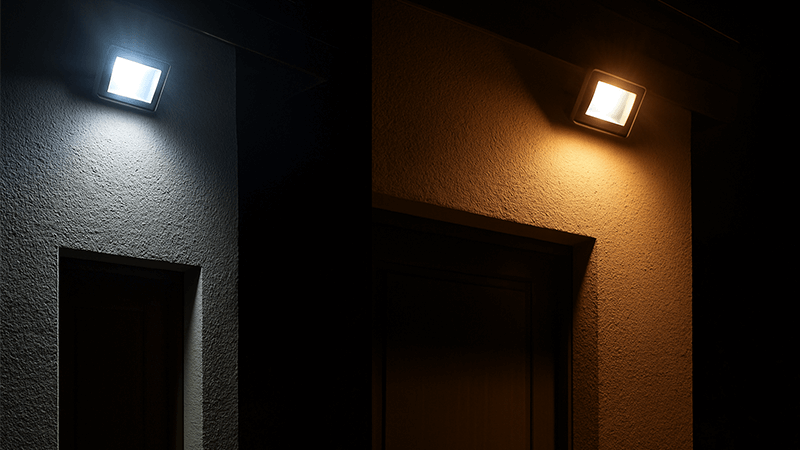
As a manufacturer, I stand by LED technology, but it’s important to be honest about its drawbacks. The upfront cost is a hurdle for many clients. While the total cost of ownership is lower due to energy savings and long life, that initial invoice can be tough. Another critical point is light quality. In the early days, we produced some lights that were incredibly bright but also uncomfortably glaring. We quickly learned that lumens aren’t everything. The design of the optics—the lens and reflector—is just as important as the LED chip itself. A well-designed fixture directs light where it’s needed without blinding your neighbors. This focus on quality is what separates a good product from a cheap one.
Key Considerations for LED Floodlights
Choosing the right LED floodlight means looking beyond the brightness and considering the technical details that impact performance and longevity.
1. Light Quality and Color Temperature (CCT)
Harsh, blue-toned light (5000K-6500K) can be very effective for security but is often unpleasant in residential settings. A warmer white (2700K-3000K) is much more inviting and causes less glare. For most homes, a CCT around 4000K is a good middle ground.
2. Heat Dissipation
LEDs generate heat, and heat is the enemy of electronics. A floodlight with a poorly designed heat sink will overheat, drastically shortening the LED’s lifespan and causing it to dim prematurely. When sourcing products, I always inspect the heat sink design—it’s a clear indicator of manufacturing quality.
3. Integrated vs. Bulb-Based Fixtures
Many modern LED floodlights are "integrated," meaning the light source is built-in. This allows for sleeker, more protected designs. However, the disadvantage is clear: if the LED fails, you replace the whole unit. Traditional fixtures with replaceable bulbs offer more flexibility for repairs and upgrades down the line.
What are the disadvantages of automatic light sensors?
You love the idea of "set it and forget it" lighting. But what happens when you need the light to stay on for a backyard party or turn off completely?
The primary disadvantage is a lack of manual control; the light operates only based on the sensor’s logic. This can be inconvenient when you need continuous light. Additionally, they are completely dependent on the sensor’s reliability and can be difficult to fine-tune for sensitivity and timing.
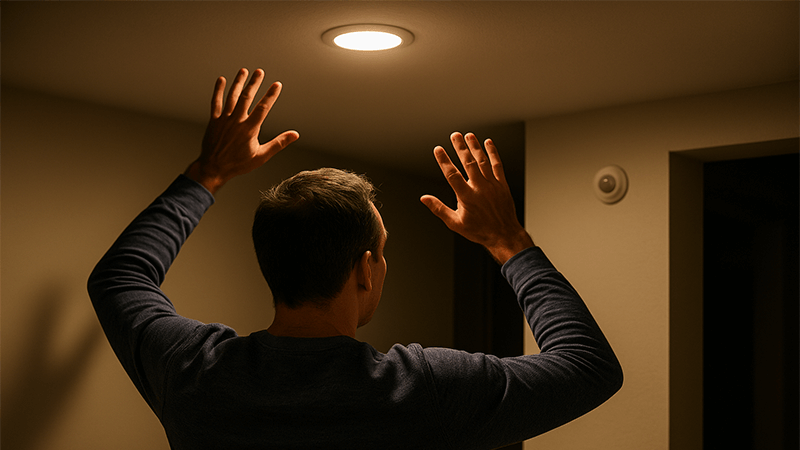
The core issue with a fully automatic system is that it removes your ability to make a simple decision. I remember speaking with a contractor who installed purely automatic lights in a shared community space. The residents complained they couldn’t host evening gatherings because the lights would turn off every 10 minutes if no one was moving around enough. A simple feature, a manual override switch, would have solved this. This experience taught me a valuable lesson: convenience shouldn’t come at the cost of control. The best lighting systems are smart, but they also allow the user to take charge when needed. That’s why many quality fixtures now include a "dusk-to-dawn" mode or a manual override that can be activated by flipping the light switch.
Sensor Modes and User Control
Understanding the different operational modes is key to selecting a light that fits your needs.
| Operational Mode |
How It Works |
Best For |
Disadvantages |
| Motion-Activated Mode |
Light turns on when motion is detected during darkness and turns off after a set time. |
Security, energy savings, and startling intruders. |
Lack of continuous light, can be annoying if it turns off too quickly. |
| Dusk-to-Dawn Mode |
A photocell detects ambient light. The light turns on automatically at dusk and off at dawn. |
General-purpose overnight lighting for safety and ambiance. |
Higher energy consumption as the light stays on all night. Not ideal for security alerts. |
| Manual Override Mode |
Allows you to bypass the sensor and use the light like a standard fixture via the wall switch. |
Tasks requiring constant light, like working outside at night or social events. |
Not all models have this feature. Can be accidentally left on, wasting energy. |
When sourcing for a project, always ask if the fixture supports these different modes. A product with flexible controls offers far more value than a simple, single-function device.
How many lumens should a motion sensor light be?
You need to light up your driveway, but you’re confused by the numbers. Will 700 lumens be enough, or do you need 3000 lumens to feel safe?
For general-purpose residential use, a motion sensor light should be between 700 and 1500 lumens. This is bright enough to illuminate pathways and deter intruders. For larger areas like a two-car driveway or a backyard, 1500 to 3000 lumens is more appropriate.
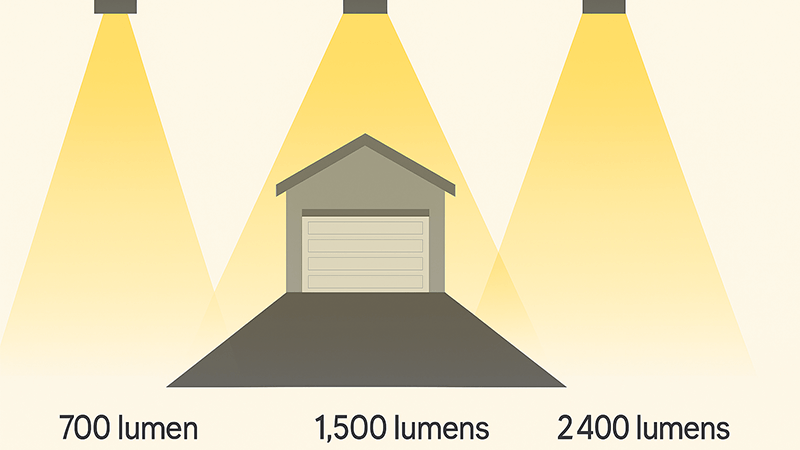
Choosing the right brightness, or lumen output, is a balancing act. It’s one of the most common questions I get from partners like Shaz. Too dim, and the light is ineffective. Too bright, and it creates harsh glare, annoying your family and neighbors. The goal of a security light isn’t just to illuminate, but to startle. A sudden blast of 1000 lumens is very effective at making someone feel exposed. You don’t need to replicate daylight. I advise clients to start with a lower lumen level, like 1200, for most applications. You can always add more lights if needed, but it’s much harder to deal with a single source that is overwhelmingly bright.
Choosing the Right Brightness for Your Space
The "right" number of lumens depends entirely on where you are placing the light and what you want to achieve.
1. Assess the Area
- Pathways and Doorways: For small, targeted areas, 700-1300 lumens is plenty. The goal is to see your keys and light the immediate path safely.
- Driveways and Patios: For medium-sized spaces, aim for 1300-2500 lumens. This should provide enough coverage to see across the area clearly.
- Large Backyards or Commercial Lots: For wide-open areas, you’ll need 2500 lumens or more. Here, it’s often better to use multiple lower-lumen fixtures than one extremely bright one to ensure even coverage without creating deep shadows.
2. Consider the Mounting Height
The higher you mount the light, the wider the beam will spread, but the less intense the light will be on the ground.
- Mounted at 8-10 ft (2.4-3m): A standard 1500-lumen fixture is very effective.
- Mounted at 15-20 ft (4.5-6m): You may need 2500-3000 lumens to achieve the same ground-level brightness.
Think of it this way: lumens provide the raw power, but the fixture’s optics, mounting height, and aiming are what turn that power into useful, effective light.
Conclusion
Motion-sensing LED floodlights offer great security and efficiency, but success depends on choosing a quality product and installing it correctly to avoid false triggers and excessive glare.